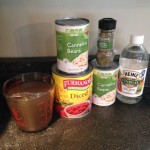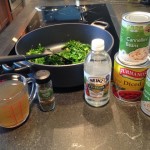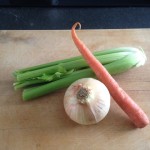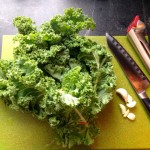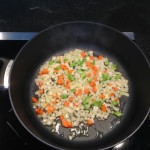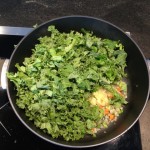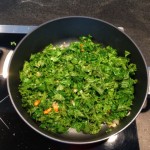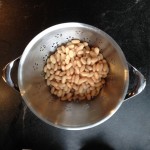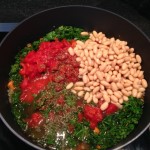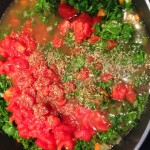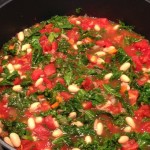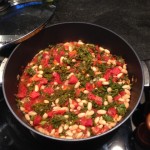March is National Nutrition Month and we’re publishing a series of blog posts that focus on nutrition within our networks. You can also learn about our programs here.
We’ve got a recipe for Kale and Bean Soup, from our Vermont Fresh: A Fruit and Vegetable Handbook. Also, we have tips for growing, storing and cooking kale.
Carroll Oursler Veltrop, a volunteer testing and tasting recipes cooked with kale for the first time for this assignment! Her comments are below in italics.
Meatless Monday Recipe: Kale and Bean Soup
- Photo courtesy of Carroll Oursler Veltrop
- Photo courtesy of Carroll Oursler Veltrop
- Photo courtesy of Carroll Oursler Veltrop
- Photo courtesy of Carroll Oursler Veltrop
- Photo courtesy of Carroll Oursler Veltrop
- Photo courtesy of Carroll Oursler Veltrop
- Photo courtesy of Carroll Oursler Veltrop
- Photo courtesy of Carroll Oursler Veltrop
- Photo courtesy of Carroll Oursler Veltrop
- Photo courtesy of Carroll Oursler Veltrop
- Photo courtesy of Carroll Oursler Veltrop
- Photo courtesy of Carroll Oursler Veltrop
Serves 6
(adapted from Dave Lieberman: foodnetwork.com)
Ingredients
- 3 tablespoons olive oil
- 1 onion, chopped
- 1 carrot, chopped
- 1 large stalk of celery, chopped
- 3 teaspoons garlic
- 1 bunch kale, chopped, stems discarded
- 4 cups broth
- 2 cans cannellini or other white beans
- 1 can diced tomatoes
- 1 tablespoon vinegar
- 1 teaspoon Italian seasoning
- Salt and pepper to taste
Instructions
- Heat oil in large saucepot over medium heat. Add onion, carrot, and celery and cook until just tender, about 5 minutes.
- Add garlic and kale and cook until garlic is beginning to brown.
- Add broth, beans, tomatoes, vinegar, and seasoning. Reduce heat and simmer, partially covered, about 1 hour, stirring occasionally. Add salt and pepper to taste are serve hot.
Homemade garlic croutons make a great topping for this soup!
Notes from Carroll:
I was excited to be given this assignment since I’ve never cooked kale before. In fact, I’ve been a little intimidated to try it out so this was a great opportunity. I started by chopping up and gently cooking the onion, carrot and celery. While it sauteed, I rinsed and chopped the kale (removing stems as recommended) and minced the garlic (using a garlic press helps save time). After adding these next 2 ingredients, I assembled the remaining items.
An important step, which isn’t mentioned in the recipe instructions, would be to drain and rinse the beans before adding to the pot.
In all, I estimate this preparation took about 30 minutes. Afterwards, though, the recipe requires you to keep cooking the soup for another hour to finish. I used home-made chicken stock, so I used online estimates to give an idea of the cost.
My one suggested alteration to the recipe would be increasing the ratio of carrots and celery. A nice addition at the end would be to sprinkle it with some parmesan cheese, which I did and enjoyed. There were only 2 of us for dinner, but I imagine this could feed 5-6 people for dinner. My husband and I both loved the soup and plan to make it again in the future. He had seconds. Great for a cold winter’s day!
Cost:
- 1 can diced tomatoes: $0.99
- 2 cans cannellini beans: $1.38
- 1 celery stick: $0.15
- 1 carrot $0.13
- 1 onion: $0.40
- 4 cups chicken stock: $2.08 – $3.00 (homemade vs. store-bought)
- Remaining small ingredients (garlic, olive oil, seasonings and vinegar) difficult to estimate but can’t be more than about $0.50
- Total: $5.63- $6.55 depending on ingredient choices
Background
A relative of cabbage, Kale is an old-fashioned vegetable whose ancestors were popular among the ancient Greeks and Romans. Types of kale very similar to those we eat today were commonly eaten in the middle ages. Because kale is so cold hardy, it has historically been an important crop that remains available long after the traditional growing season ends. Unlike cabbage, kale leaves do not form a tight head, but instead branch off from a thick, central stem. Kale can be found in curly and flat-leafed varieties in colors that range from blue-black to bright green to purplish. In World War II, kale was a common component of victory gardens due to its ease of growing. Kale is enjoying a comeback today for many of the same reasons that have made it intermittently popular for centuries.
Growing Tips
Kale can either be grown as a baby green or allowed to mature to its full size. A very cold hardy vegetable, kale can be direct seeded as soon as the soil can be worked or started indoors 4 weeks prior and transplanted. For baby leaf kale, sow seeds every 4 weeks until the first frost. For full-sized kale, harvest the bottom leaves first and the plant will continue to produce, sprouting new leaves out of the center. Kale often becomes sweeter after a frost, but will eventually die off after prolonged freezing temperatures. Keep an eye on plants for cabbage worms. Some varieties (particularly Red Russian) are prone to flea beetles when young, but you can protect plants with row cover.
Storage
After harvesting leaves, dunk in very cold water and shake to dry slightly. Wrap loosely in plastic and store in the crisper drawer of your refrigerator for up to a week. Because kale will hold so well in the field, home growers can afford to delay harvesting until just before use. For long-term storage, kale can be blanched (dunked in boiling water for a few minutes), chilled, drained, then packed into freezer bags and stored in the freezer for several months.
Nutritional Benefits
Kale is one of the best things you can eat! Packed with a huge variety of vitamins and minerals, kale delivers lots of benefits with few calories. Like other members of the cabbage family, kale contains sulforaphane, a compound that is believed to have anti-cancer properties. Kale is also a good source of iron and dietary fiber.
Preparation
Rinse fresh kale before using. For kale with large, tough stems, rip (or cut) the leafy portion from the central rib and discard the tough portion. Young, tender kale is tasty raw if chopped and added to salads, but older kale generally lends itself better to cooking. Kale can be steamed, boiled, sautéed, baked, and added to a wide variety of dishes.
To receive more recipes and tips on your favorite fruits and vegetables, download Vermont Fresh: A Fruit and Vegetable Handbook. We also need more volunteer home chefs for this project.
Vermont Foodbank fresh food initiatives would not be possible without your support. Please consider giving to the Vermont Foodbank today!

